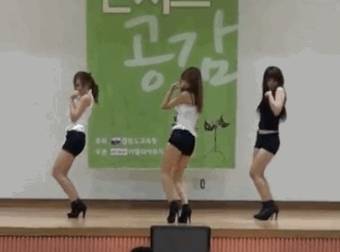If you’re not exactly sure what you’re looking at when you look at Terry Hays’ art, that’s okay. There’s a lot going on. On the surface, complex forms are arranged in dizzying patterns. They’re almost recognizable, resembling cloud formations, cells, or some kind of traditional art from a lost civilization.
Hays’ work seems to straddle the boundary between paintings and sculptures. They are created by applying acrylic paints to wood, like a traditional painting. However, their irregular, three-dimensional shapes and the application of paint to all sides suggests a sculpture. The colors and forms are packed on densely. Though the pieces are abstract, the colors, patterns, and shapes suggest scenery or evoke an emotional statement.
Fire! Over there!
Swimming to salvation
Grassfire
Trees #1 & #2
Hailing from Texas, Hays’ love for these large, installation-like pieces came from early work with installation art that would fill a gallery room…literally. After working as a scenic artist for stage and TV productions, Hays struggled to find a method of painting that didn’t feel too much like work. Thus, this style of work was born.
Hays uses variety of subjects for inspiration, including traditional art from around the world. His goal of breaking away from preconceived notions brought him to combine these sources in a unique way. His process, developed over time, is unlike anything we’ve ever seen. Hays enlarges, crops, and prints out images of source material–painting details, close-ups of items found in nature, tattoos, and almost anything else. He carefully cuts them apart and reassembles them into abstract compositions, which he considers a “visual language” like no other. The design on the paper “skin” is then transferred to a structure on which Hays paints. The structures are either constructed or found. Hays sometimes even uses tree roots dug up from his backyard.
Swimming to salvation, escape from the water demons
Grass fire near the Barnett Shale
Altars, armor, battleships, floats, repetition #3
The concepts and meanings behind Hays’ work are just as multifaceted and complex as the artwork itself. In creating the pieces, Hays found that the artistic process became a “personal search for defining what art should be or should not be for me as an artist. It has in many ways become a statement about painting in a world dominated by new media…about commitment…about discipline…about what the everyday activity of an artist really is.”
You can see more of Hays’ work on his website, and keep up with his latest works on his Tumblr.
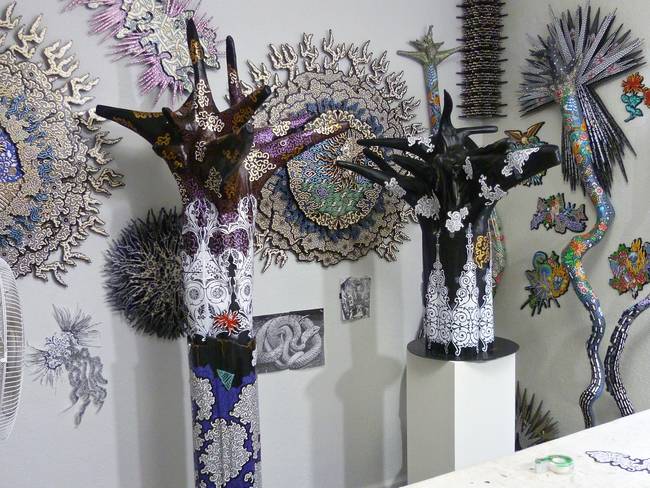 share
share
 share
share
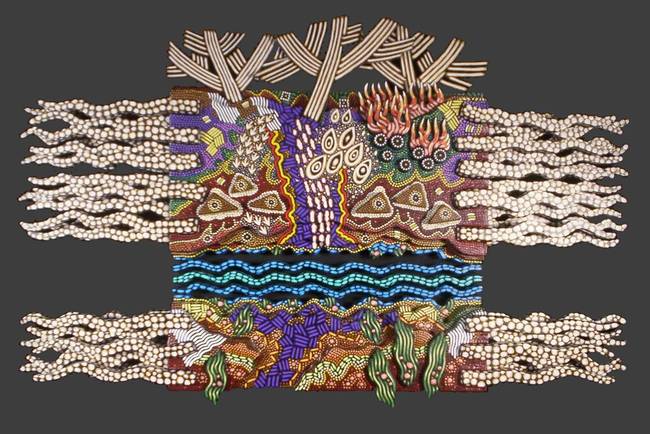 share
share
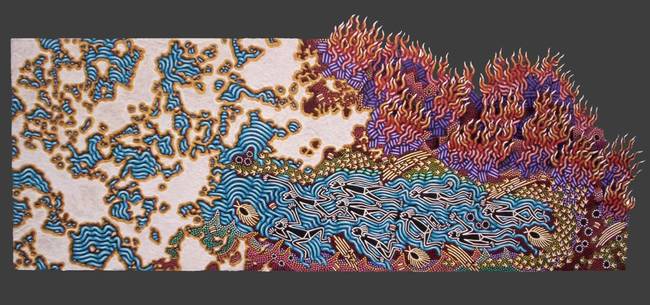 share
share
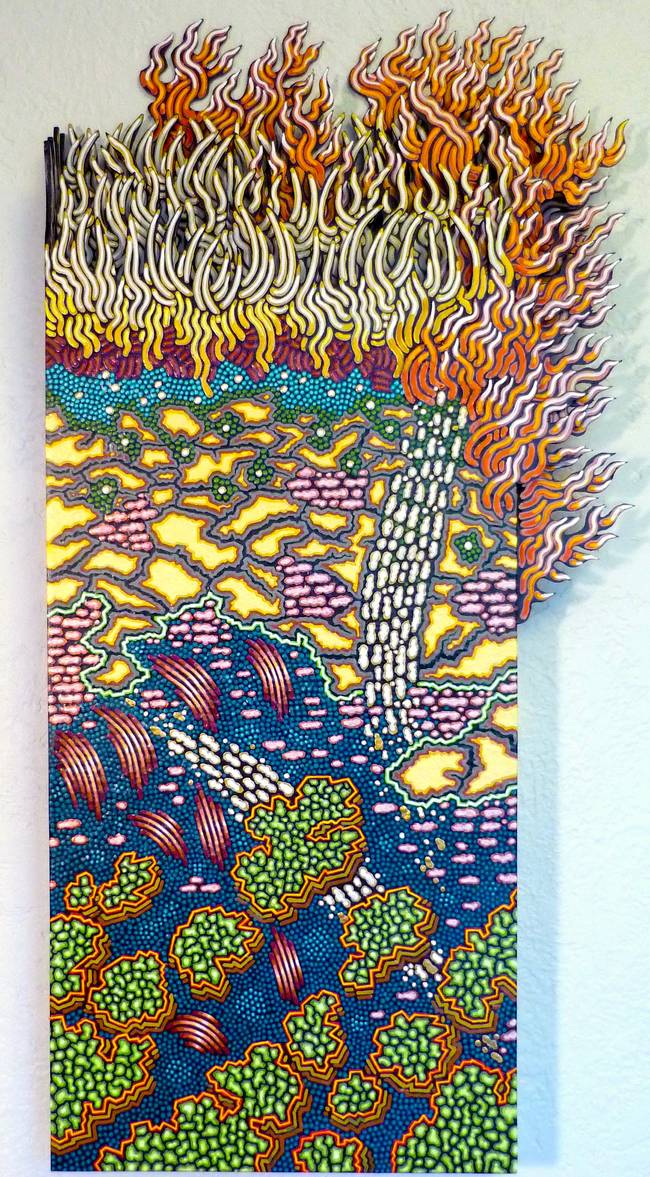 share
share
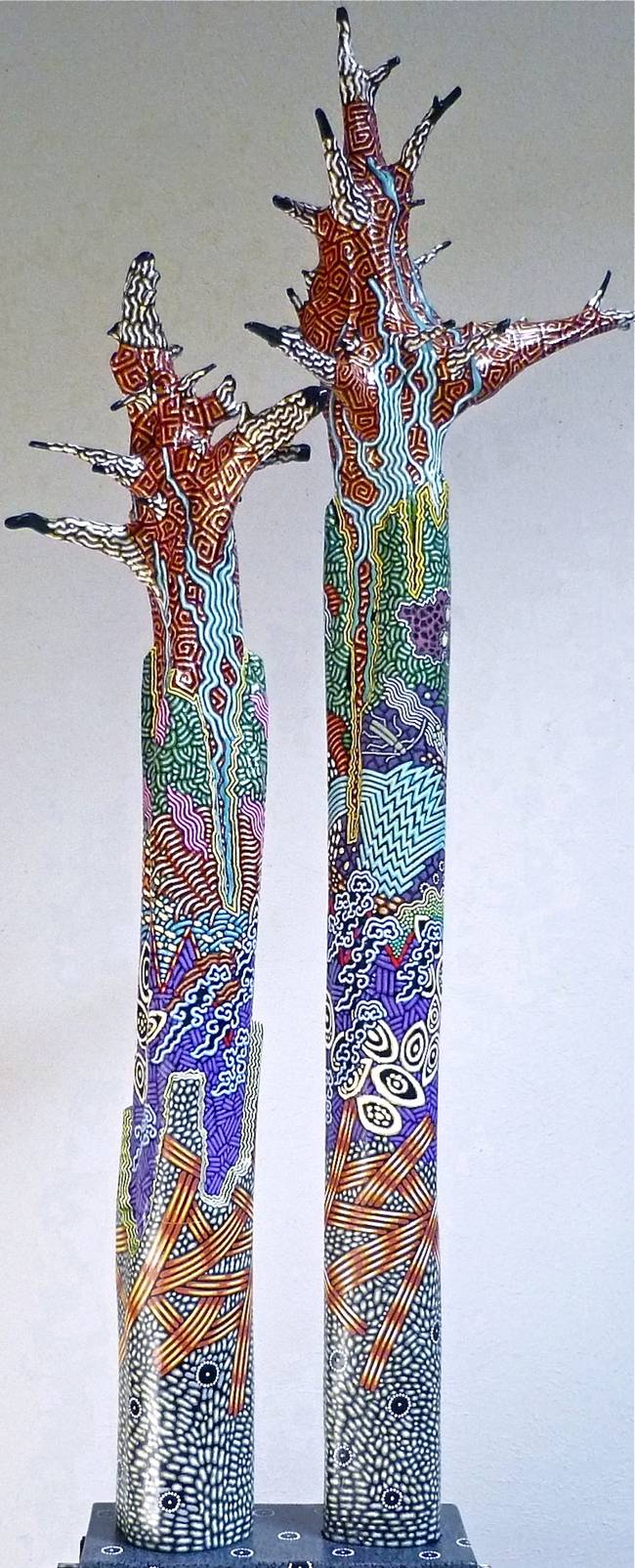 share
share
 share
share
 share
share
 share
share
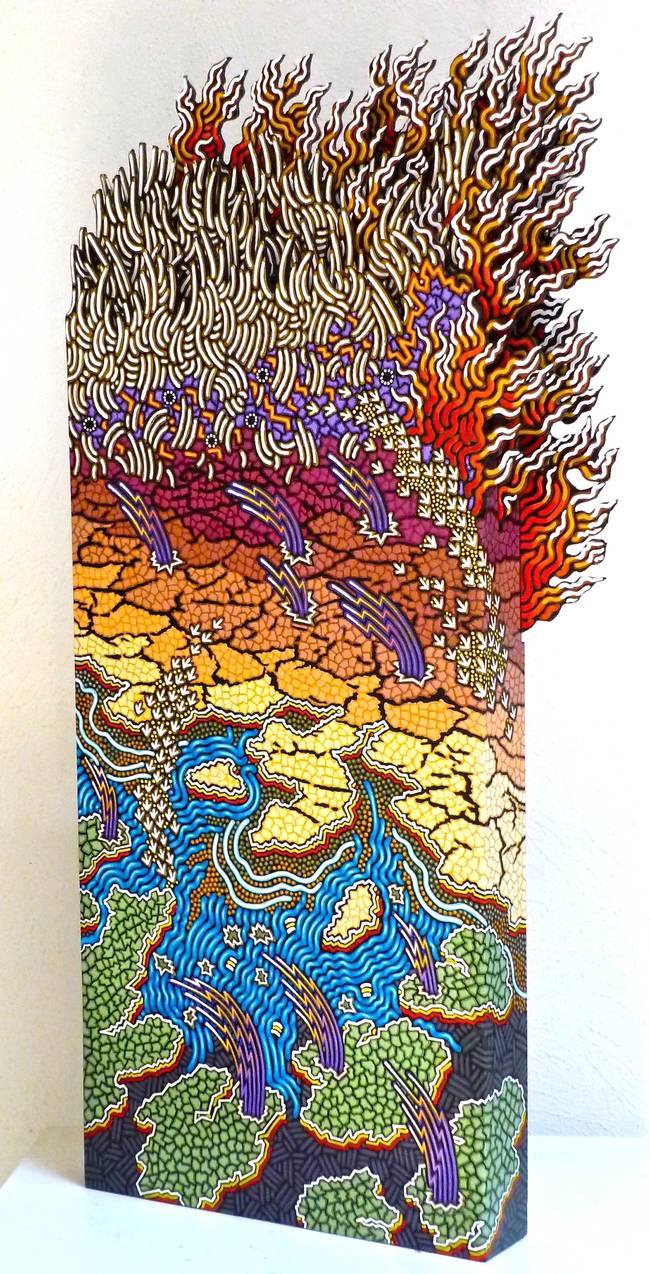 share
share
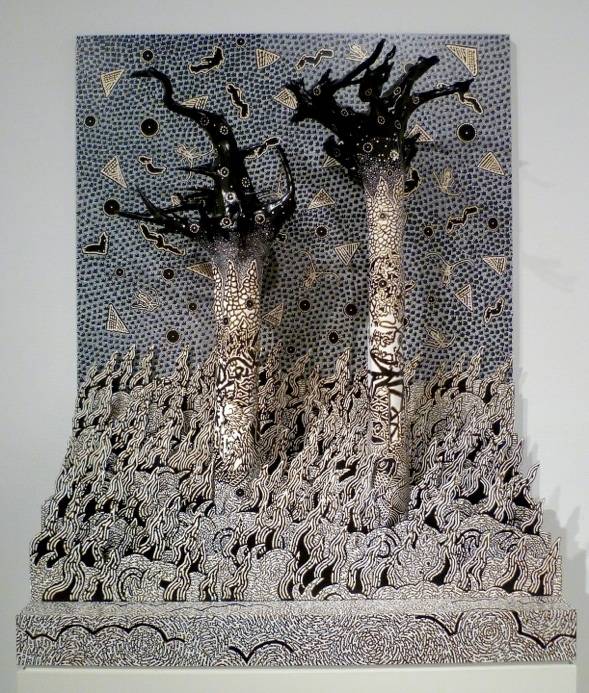 share
share
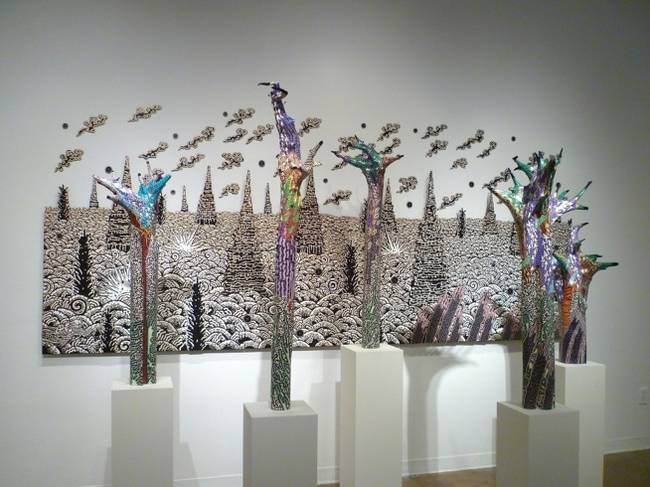 share
share
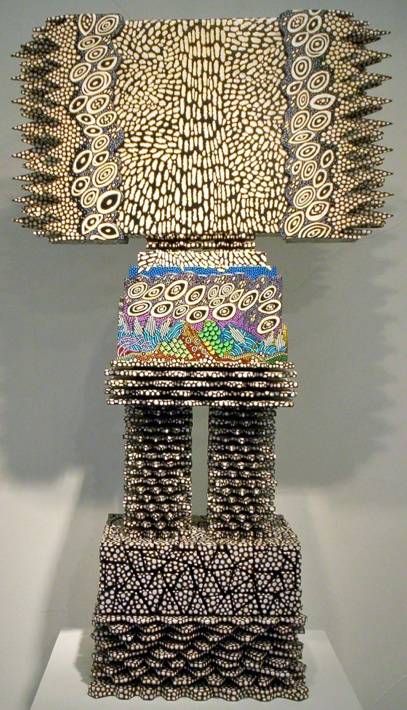 share
share

